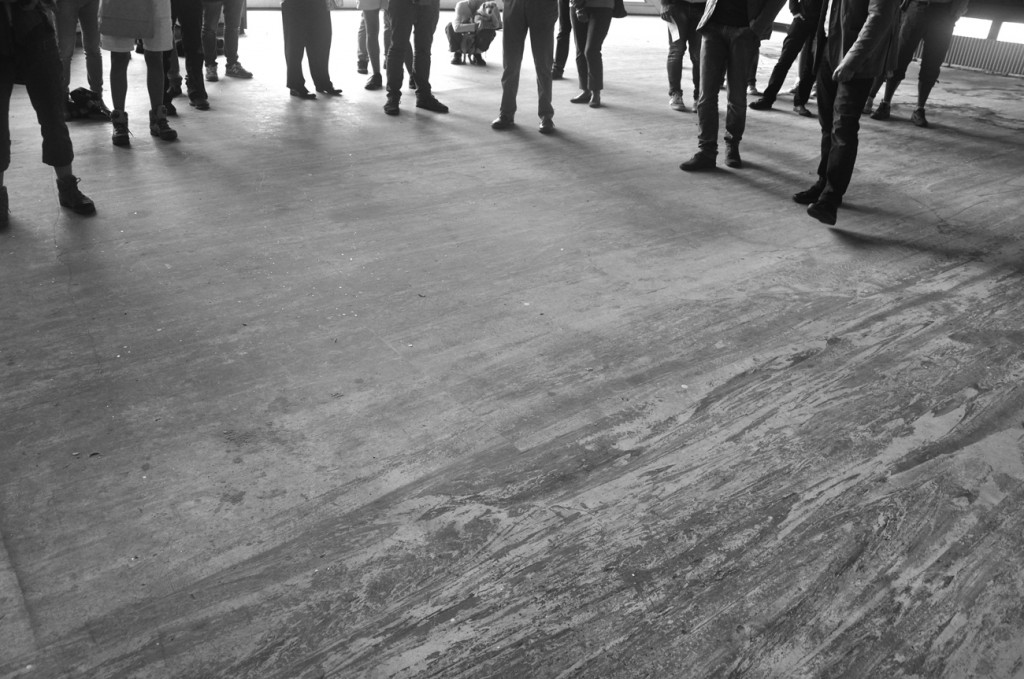About a month ago I’ve visited the former Eni Village of Borca di Cadore together with Dolomiti Contemporanee. I’ve collaborated with DC a few times before, in the various sites in which they’d taken interest, with artworks planned with a dialogue with the space in mind: in Sass Muss in 2011, in Taibon in 2012, and in Casso in 2013.
I didn’t know anything about Borca and the Eni Village, I’d only seen a few beautiful pictures taken in the previous surveys to which I did not take part. It was immediately clear that this location is exceptional. But I couldn’t “understand”, if one could speak of comprehension, that is, its extraordinary nature. We’ve arrived at about 10 in the morning, and while in the rest of the world the temperature was around 33 degrees Celsius, and the Sun shined swelteringly down, over the first series of turns leading to the entrance you could already feel the cool air, the chilliness, that makes you realise you’re not in the “city”, but in an almost parallel reality. Separated. I don’t really feel like reporting on what has been said and told about the Eni Village at the beggining and during the exhibit: an educational chat which to those whom, like me, did not know anything about the Village has opened towards many interesting inputs. The impact, the important thing, has been, is, devastating. You dive directly into a place non-place which emanates the sweat of a whole life that it has housed once upon a time. It is not a disused factory, or simply a place that has changed purpose, abandoned. It’s a residue. An enormous footprint of a complex combination of thoughts and utopias. The entrance to the Colonia (Eng.: summer camp building) doesn’t allow commenting on the first few large halls: you end up enmeshed by that place, whose structures are so extraordinary. In his planning, Gellner did not leave any element to chance, may it be architectural, functional or decorative: the shape of the rooms, the square windows, the lighting system, the radiators, the chairs, the paving,… Delving deeper inside, this feeling of structural coherence and harmony becomes absolute. The bathrooms, maybe, are one of the most extraordinary things. The cleverness, the effeciveness and the practicality of some of the design choices, make all the settings innovative not just for the years in which they were made, but by nowadays standardss as well.
Established: the quality of the architectural planning is astonishing. But it’s not just because of that, actually is not really because of that, that I’ve decided to propose a project for Borca. (indeed, the perfection and beauty of some of the settings, from a certain point of view, dishearten someone like me, who works with visual arts from intervening on a such a place. The risk is almost a given: being totally sucked into, or completely ridiculed by, such a powerful place. How can one think about inserting a small, insignificant framed drawing to a wall? It’s not thinkable; not doable. It doesn’t make sense. Perhaps Polke, Beuys, or few others, could insert themselves in such settings with a drawing on paper without being defeated by them…) The Eni Village has a very powerful strenght of impace which, from my point of view, has to be conveyed and utilized as a lever. A work like mine, which travels on thin semantic lines, on a “stealthy” impact, on tiny clues, vibrations, the idea of an intervention in Borca has to penetrare in the epidermic structure of the place and come to an almost mimetic relationship with it, to then slowly re-emerge, in a “subcutaneous” action. To clarify: working in a small moving, earthquake-like slope, a breaking of coherence inside the architectural thread itself, a virus that goes to integrate and permeate the structure. The opportunity that I can glimpse for my work in Borca, is precisely that of taking energies, suggestions, inputs, images, ideas, and to realise something which constitutes as a rupture with my own “usual” research (research carried out more often than not in the studio, in front of a panel and a sheet of paper, alone) to inspect new possibilities and new directions. This is the key to interpretation that interests me and the direction that I want to give to my project of intervention in Borca. Something that would undoubtly undermine my own research itself, trying to overcome some of my limits; something that would allow me to establish for myself new issues for which to seek a solution.





